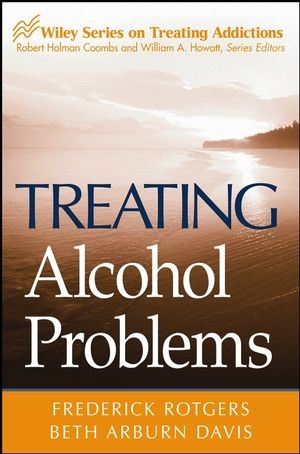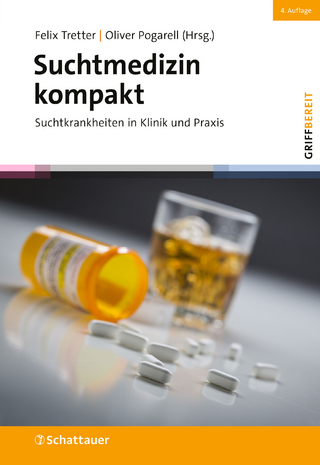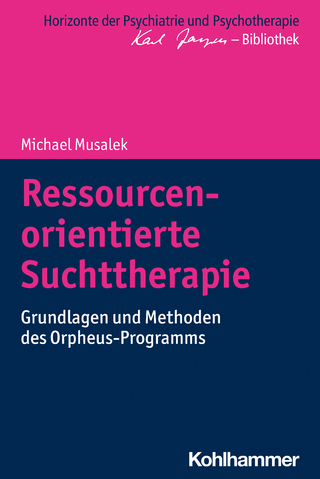
Treating Alcohol Problems
John Wiley & Sons Inc (Verlag)
978-0-471-49432-4 (ISBN)
This handy guide provides a single source of evidence-based methods for assessing and treating alcohol problems Part of the Wiley Series on Treating Addictions, Treating Alcohol Problems offers the latest evidence-based guidance on effectively diagnosing and treating the full spectrum of problems related to drinking. Whether you are an addictions counselor, mental health professional, or physician, you can use this all-in-one guide as a stepping-stone to seek out and develop better treatment options for your clients.
Bringing treatment approaches into harmony with scientific findings, Treating Alcohol Problems summarizes methods proven to be successful. Written in a clear and accessible style, the text focuses on presenting the information most directly useful for helping clients. This handy guide is ideal for training and continuing education, as a refresher for seasoned professionals, and as a useful primer for all who come into contact with individuals suffering from alcohol abuse.
Coverage includes:
Conceptual foundations-defining alcohol problems
Identifying alcohol problems
Assessment and treatment planning
Treatment tools, programs, and theories
When and how clients should be discharged to aftercare
Increasing recovery success
Culture, coaching, and change-moving beyond alcohol problems
Finding and getting the best out of professional resources
Supporting this expert coverage, the reader-friendly series format features quizzes, checklists, diagrams, "Research Frontier" boxes, problem-solving scenarios, "Dos and Don'ts" lists, "Test Yourself" questions, suggested resources, and more. These tools help you reinforce your understanding and integrate this knowledge into your practice. In addition, a thorough bibliography and appendix provide lists of contacts for self-help groups, residential and outpatient treatment programs, support groups, Web sites, and reading material.
Treating Alcohol Problems is an essential resource for mental health professionals, as well as an indispensable study guide for students in psychology and social services courses.
Frederick Rotgers, PsyD, is Associate Professor in the Department of Psychology at the Philadelphia College of Osteopathic Medicine. He is the Senior Editor of Treating Substance Abuse: Theory and Technique and Senior Author of Responsible Drinking: A Moderation Management Approach for Problem Drinkers. He is on the editorial boards of several journals and is active in promoting harm reduction treatment approaches. Beth Arburn Davis, PsyD, completed her doctorate in clinical psychology at the Philadelphia College of Osteopathic Medicine and works as a behavioral health therapist for a large health care organization. Prior to entering graduate school, she was a journalist for more than fifteen years.
Series Preface. Preface.
Chapter 1: Conceptual Foundations:Defining Alcohol Problems.
Alcohol Problems: What Are They, Who’s Got Them, Who Hasn’t, Who Might?
Defining Alcohol Problems.
Drinking Definitions.
Diagnosis Definitions.
ASAM Definition of Alcoholism.
Abusing “Abuse”.
How the DSM Works.
Alcohol Abuse.
Alcohol Dependence.
Once a Drunk, Always a Drunk? The Course of Alcohol Problems.
Treat Me or Lose Me: Is Treatment Necessary to Resolve Alcohol Problems?
To Quit or Not? How Do Most People Resolve Alcohol Problems?
Different Strokes for Different Folks: Recovery, Relapse, and the Future of Treatment.
Key Terms.
Recommended Reading.
Chapter 2: Identifying Alcohol Problems: “I Know It When I See It! Or Do I?”
Signs and Symptoms: Fleshing Out the DSM.
The Case of Mary.
The Case of Tom.
Recognizing More than One Problem: Is It Just a Drinking Problem?
How Likely Is the Problem Drinker to Have Other Problems?
“Denial” May Be Just Another River in Egypt: Where Does Denial Come From?
What Should I Do as a Professional? Roles and Responsibilities.
How Drinking Affects Family, Work, and Other Areas of the Client’s Life.
Family and Social Problems.
Work Problems.
Health and Medical Consequences.
“So What’s In It For Me?” Answering Questions from Clients about Treatment.
To Refer or Not to Refer: Advantages and Disadvantages of Referring a Client to Specialized Treatment.
Summing Up.
Key Terms.
Chapter 3: Finding and Getting the Best Out of Professional Resources.
Developing a Professional Referral Network.
The “Match” Game: How to Select the Right Professional.
The Role of Medical Personnel.
The Client with Mental Health and Alcohol Use Problems.
Finding Out about the Professional’s Style and Method of Practice.
Referrals for Adolescents.
Referrals for Older Persons.
Diversity and Referrals.
Spirituality and Religion in the Referral Process.
Clients’ Sexual Orientation and the Referral Process.
The Suicidal or Homicidal Client: Protection and Duty to Warn.
Helping the Client to Consider Treatment ... or Motivation, Motivation, Motivation.
Crises.
When a Crisis is in Progress.
The Dangerous Situation.
Involving Friends and Family.
Risk Management Strategies.
Risk Management: Protection for You and Your Client.
Referral Follow-Up.
Key Terms.
Recommended Reading.
Chapter 4: Assessment and Treatment Planning.
Treatment Plan as the Map to Success.
The Beginning of It All: The Intake.
The Big Picture: The Genogram.
Insurance.
Screening Evaluation or Assessment Battery?
Family, Friends, and Concerned Others in the Treatment Planning Process.
Self-Harm and Harm to Others: Initial and Ongoing Assessment.
Summing Up.
Key Terms.
Recommended Reading.
Chapter 5: Treatment Tools, Programs, and Theories: Helping Clients Overcome Problem Drinking.
Change Tools: What’s Available to Help People Overcome Drinking Problems and How Effective are Various Approaches?
Readiness for Change as the Therapeutic “Wild Card”.
What’s the Best Approach?
Twelve-Step Approaches.
Cognitive Behavioral Treatments (CBT).
Motivational Interviewing (MI).
Inpatient or Outpatient: Which is Best?
Medication.
The Role of Support Groups in Helping Clients Overcome Alcohol Problems.
Self-Selection and Choice.
Drinking Goal.
Belief or Disbelief in Disease Model Accounts of Alcohol Problems.
Comorbid Psychopathology.
Availability.
Summing Up.
Key Terms.
Recommended Reading.
Chapter 6: When and How Should Clients Be Discharged to Aftercare?
What is Aftercare?
How Do You Know If the Client Should be Discharged to Aftercare?
Types of Aftercare.
Halfway Houses.
Partial Hospitalization or Intensive Outpatient Treatment.
Outpatient Aftercare.
Discharge from Aftercare.
Aftercare for the Client with Dual Diagnosis.
Assessing Community Resources.
Family and Friends in the Aftercare Setting.
Key Terms.
Recommended Reading.
Chapter 7: How to Increase Recovery Success, Minimize “Slips,” and Avoid Chronic Relapse.
The Problem of the “Failure” Label.
Lapse and Relapse.
Assessing Relapse Potential.
What Is Relapse Prevention?
Fostering Hope and Self-Efficacy.
Relapse Prevention 101.
How the “Thinking” Factor Works.
Enhancing Self-Efficacy: The Power of Accurate Thinking.
Triggers: People, Places, Things, and More.
Developing a Relapse Prevention Plan.
Dealing with Cravings and Urges.
Steps in Creating a Relapse Prevention Plan.
Monitoring Progress.
Working the Relapse Prevention Plan.
Key Terms.
Recommended Reading.
Chapter 8: Culture, Coaching, and Change: Moving Beyond Alcohol Problems.
Culture and Ethnicity in Changing Alcohol Problems: Different Strokes for Different Folks.
Defining and Maintaining a Healthy Lifestyle.
Summing Up.
Key Terms.
Recommended Reading.
Appendix A: Locating and Selecting Treatment Programs for Referrals.
Appendix B: Biological Monitoring and Effective Treatment.
References.
Index.
| Erscheint lt. Verlag | 9.5.2006 |
|---|---|
| Reihe/Serie | Wiley Treating Addictions Series |
| Verlagsort | New York |
| Sprache | englisch |
| Maße | 155 x 236 mm |
| Gewicht | 225 g |
| Themenwelt | Geisteswissenschaften ► Psychologie ► Sucht / Drogen |
| ISBN-10 | 0-471-49432-1 / 0471494321 |
| ISBN-13 | 978-0-471-49432-4 / 9780471494324 |
| Zustand | Neuware |
| Haben Sie eine Frage zum Produkt? |
aus dem Bereich


